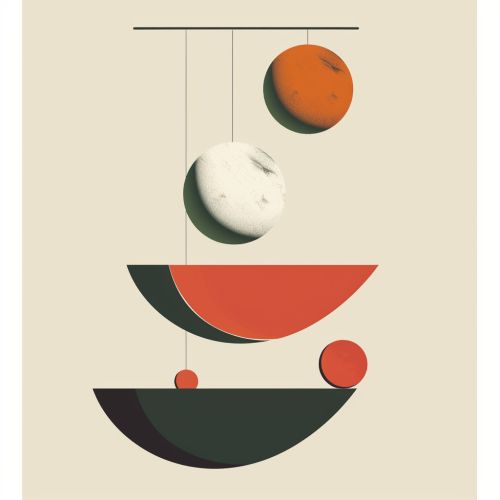Classical Mechanics
Introduction
Classical mechanics is a branch of physics that deals with the motion of bodies under the influence of forces or with the equilibrium of bodies when all forces are balanced. It is one of the oldest subjects in science, with roots in the works of Aristotle and developments by Galileo, Newton, and others. It is also the foundation upon which all other branches of physics are built.
Historical Background
The origins of classical mechanics can be traced back to the ancient Greeks. The philosopher Aristotle was one of the first to analyze motion, dividing it into natural motion (such as falling) and unnatural or forced motion. However, it was not until the 17th century that Sir Isaac Newton formulated the three laws of motion that lie at the heart of classical mechanics.


Newton's Laws of Motion
Newton's laws of motion are three physical laws that form the foundation for classical mechanics. They describe the relationship between a body and the forces acting upon it, and its motion in response to those forces.
First Law: Law of Inertia
The first law, also known as the law of inertia, states that an object at rest tends to stay at rest, and an object in motion tends to stay in motion, with the same speed and in the same direction, unless acted upon by a net external force.
Second Law: F=ma
The second law states that the acceleration of an object is directly proportional to the net force acting on it and inversely proportional to its mass. This is often summarized by the equation F=ma, where F is the net force, m is the mass, and a is the acceleration.
Third Law: Action and Reaction
The third law, also known as the law of action and reaction, states that for every action, there is an equal and opposite reaction. This means that any force exerted on a body will create a force of equal magnitude but in the opposite direction on the object that exerted the first force.
Principles of Classical Mechanics
Classical mechanics is based on a few fundamental principles, which are accepted based on observations of the natural world.
Principle of Least Action
The principle of least action, or the action principle, is a variational principle that, when applied to the action of a mechanical system, can be used to obtain the equations of motion for that system.
Conservation Laws
Conservation laws are fundamental to our understanding of the physical world, as they describe quantities that remain constant over time. In classical mechanics, these include the conservation of energy, momentum, and angular momentum.
Determinism
Determinism is the philosophical idea that every event or state of affairs, including every human decision and action, is the inevitable and necessary consequence of antecedent states of affairs. In classical mechanics, this is reflected in the fact that the equations of motion are deterministic.
Applications of Classical Mechanics
Classical mechanics has been used to describe a vast range of phenomena, from the motion of celestial bodies to the behavior of everyday objects.
Celestial Mechanics
Celestial mechanics is the branch of astronomy that deals with the motions of celestial bodies. The laws of classical mechanics are used to calculate the orbits of planets and moons, the behavior of stars in galaxies, and other astronomical phenomena.
Engineering
Classical mechanics is fundamental to engineering, as it allows engineers to calculate forces and stresses on structures, determine the motion of objects, and design and analyze machines and mechanisms.
Limitations of Classical Mechanics
While classical mechanics is extremely useful and accurate in many situations, it has its limitations. It does not accurately describe the behavior of objects at very high speeds or very small sizes. For these situations, special relativity and quantum mechanics are needed.
